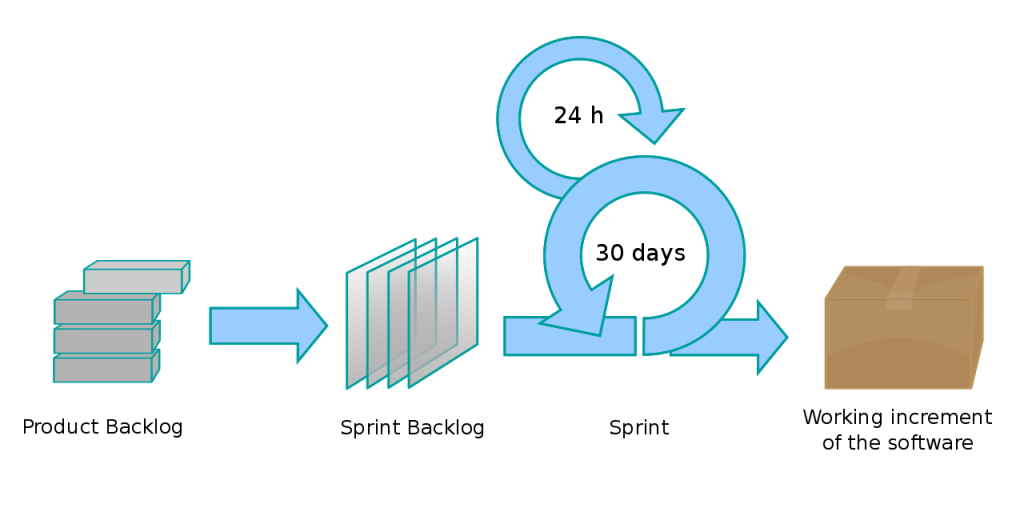Tag: agile
-

Who should I put on my project team?
Every now and then, somebody has asked me “what should my team look like”? Is there a formula for how you can structure a technical team to be ready for a Sitecore implementation project and then the maintenance afterwards? I’m sorry to say: there is no such formula. Every single…
-

New Microsoft Planner Due Date Notifications
A short while ago I wrote about our team’s initial adoption of Microsoft Planner. At the time, we were having issues with the due dates feature because there seemed to be no way to view our schedule. A few months later, we ran into another issue with due dates. The…
-

Using Epics to drive a fixed-price backlog
You probably read the title and said to yourself: “Epic: you keep using that word, but I don’t think it means what you thinks it means”. It is true. The fixed-price agile backlog exists. Now, if you are lucky enough to have never faced such a beast, then I bow…
-

Continuous Everything: The Art of Repetition
It is very fashionable to apply a single word to pretty much ANYTHING to try to get in on the latest trend. The current ‘Whatever-Ops’ trend (MarketingOps, ChatOps, OpsOps) is one such example. For a while, though, we’ve been having the word ‘Continuous’ thrown in front of a whole lot…
-

Eighth day of Christmas… Scaling agile!
On the eighth day of Christmas, my true blog gave to me: Eight Scrums a-scaling, Seven most-heard retrospective comments, Six Keystone config tips, Five Golden Rules! Four CI tools, Three powershell scripts, Two Keystone merge tips, …and a placeholder rule in the content tree. You may have found that a lot of…
-

Seventh day of Christmas… most-heard retrospective comments
On the seventh day of Christmas, my true blog gave to me: Seven most-heard retrospective comments, Six Keystone config tips, Five Golden Rules! Four CI tools, Three powershell scripts, Two Keystone merge tips, …and a placeholder rule in the content tree. Over the years, I’ve sat in a lot of sprint retrospectives.…
-

Fifth Day of Christmas… Five Golden Rules
On the fifth day of Christmas, my true blog gave to me: Five Golden Rules! Four CI tools, Three powershell scripts, Two Keystone merge tips, …and a placeholder rule in the content tree. Today I offer you some best DevOps practices for your delivery team. Do, or do not. There is no…
-

Can Trello Gold enhance your Scrum board?
A long time ago, in a blog post far, far away, I explored the use of Trello’s agile task tracking toolset to create a Scrum board for developer implementation. This has worked well for me over the years, especially when a project needs a little more structure than Kanban sometimes…
-

Making it Work: Specialists on an Agile Team
In some lines of business, such as consulting, the organizational business goals require a certain amount of specialization in order to deliver to clients efficiently and with high quality. These organizations also typically bill by the hour, meaning downtime is a serious cost to the business. This can be difficult…
-

Why is DevOps so hard?
With agile development teams delivering potentially shippable software every few weeks, organizations struggle with the need to efficiently transition requirements, source code, and deployment steps from the development team to the operations team. Traditional documentation-oriented mechanisms cannot be efficiently kept up to date due to the ever-shifting nature of continuously evolving…
-
Visual Studio Online agile options are opening up
Recently, Aaron Bjork wrote about some of the goodies coming down the pipe for Visual Studio Online (VSO) agile project management options. I still remember my first forays into TFS 2010, trying desperately to use it to manage my agile projects. Needless to say, I was frustrated at the time, but…
-
Setting organizational expectations when implementing Scrum
When a team first transitions to an agile delivery model, the team experiences challenges and frustration as they adopt a new way of thinking and new processes. Often times, teams are told that they are making the change to agile in order to deliver software faster and cheaper, but find…
-
Moving day always brings out the agile practitioner in me
Most of us have had to move ourselves at least once in our lives. We think we have it all planned out, but the true test is when the movers show up (or your friends who were lucky enough to show up and provide free labour). I got to be one…
-
Agile in the Iron Triangle
Many of us are valiantly in the trenches trying to bring agile practices to our teams, clients, and organizations. Others have heard the buzz over the last decade and are starting to make their first steps. Either way, you need to remember that some issues never go away. The old constraints of…
-
Going Lean: Tips from the trenches
Continuous refinement is always in need when working in an agile delivery framework. The first thing you learn when you adopt a framework is that it does not work for all situations. Scrum, like other models, works really well in particular development situations. Sometimes, however, you need to transition your team…
-
Clearer requirements through Sitecore prototyping
Recently, my colleagues and I were about to embark on a mission to gather requirements for an upcoming release. We had already worked with this particular client and therefore knew that they would have a solid understanding of their existing solution, if not the full capabilities of the Sitecore platform.…
-
How I know a project plan is total nutbars… and how it can be fixed
We have all seen the magical project plans that have no grounding in reality. Schedules are far too aggressive, scope is beyond what the team can handle, not enough resources available to properly run the team… all to meet some magical “hard deadline” that has been imposed seemingly without any…
-
4 ways to change so you can deliver more often
I am a big fan of continuous delivery and deployment. You might have seen me write about it a few times before. When I first bring the idea up with clients, there is hesitation. One might even call it fear. The benefits are huge, allowing you to reap the return on…
-
Et tu brute? Of cargo cults and agility…
I’m not sure what triggered it, but at some point while I was on vacation a few folks started getting really ticked off about the state of “Agile” these days. People adhering to rules or tools, not understanding what it means to bring agility to a project, or building giant…
-

Feeling the Product Owner’s pain
On Friday, a large group of us gathered in the office for a full day of looking at how we are currently managing our requirements over the course of a project. In the room we had folks who play the roles of technical leads, scrum masters, and product owners, all…
-

Tracking hours burndown in Trello
In the past, I’ve written about some tools for doing Scrum inside of Trello, as well as some guidance on creating Scrum boards using these plugins. Recently, I received a question about how to accurately track hours spent in Trello. Zig Mandel, the man behind Plus for Trello and Spent for…
-

The NFR Dilemma: Capturing Nonfunctional Requirements in the Backlog
Development teams using Scrum, or similar agile forms, will find that the constraints on the system that are represented by Nonfunctional Requirements (NFRs) can be a pain to capture and reference in product backlogs. The NFRs aren’t acceptance criteria, but the “story” isn’t really done unless it meets them. The…
-
Questions on getting started with Scrum
Even though the web will have many resources available to users on how to get started with Scrum, some folks do find they need help sifting through the massive amounts of information to find what they need. Recently, I answered some questions for a person in just such a situation…
-
How to set up Trello board for Scrum
In the past, I’ve written about how to use Trello for agile task tracking, and also about some tools that allow you to use Trello for Scrum. Recently I started up a little side project for a personal application I wanted to write, and I decided to run the project…
-
Baby Steps to SOA: A retrospective on the blog series
One of the key needs in lean, scrum, and other agile processes is for continuous improvement. We constantly review how we do things to do them better. The most common method of doing this is the retrospective. After 5 months of writing the Baby Steps to SOA series, I decided…
-
Scaled Agile: Bringing Kanban to the Executives
In my normal cadence, this week would be another installment in the Baby Steps to SOA series. However, with a few weeks of vacation under my belt, I was not prepared to tackle the important discussion of centralizing eCommerce business logic quite yet. That being said, my vacation time did…
-
Risk Management on Agile Projects – The Risk Burndown chart
For most small Agile projects, I haven’t needed to track risks as explicitly, since the standard agile structure with impediments identified daily tends to highlight immediate problem areas. However, for larger projects and for projects working within a more traditional client environment, tracking risk logs and project risk status are…
-
Sprint Discipline: Releasing each iteration
Originally posted on Scott's Thoughts: One of the things that I always hear about agile development and scrum in particular is the idea of creating a releasable piece of software at the end of every sprint. This is usually redefined into “a potentially releasable piece of software” at the end…
-
Using Trello for Scrum
A lot of the traffic that comes through this blog is related to folks looking to use Trello for agile development. If you are using a Kanban/Lean approach, it works really well out of the box. However, if you are using a more Scrum-like approach, you may have noticed the…
-

5 things agile developers can learn from the hockey greats
Teams in organized sports experience scenarios not unlike those that a software development team see on a day-to-day basis: overcoming obstacles, working together as a team, training, strategizing, keeping score, resourcing, among others. As a highly-unskilled goaltender and defenceman, I have been able to experience both sides of this equation,…
-

4 reasons why agile teams should stage deployments each iteration
There are a few shops like Etsy that use continuous deployment/delivery to have code go straight into production, but otherwise the rest of us have some sort of environment between the developer’s machine and the live production environment. Some call this Staging or QA, or there may actually be MANY…
-
Free Agile Task Tracking with Trello
There are a ridiculous number of tools out there to help track tasks, but of all of them, Trello has been my favourite for cheap agile task tracking. It’s has no cost, unlimited boards, real-time collaboration, and a UI so intuitive it makes adoption across the team dead simple. First…
-
Dungeons and Dragons TFS Process Template
There was no way that I could resist downloading the D&D process template posted by the TFS product team on their blog. I absolutely NEEDED to see what had been done inside here. The blog post was very bare on the details, but it seems that with a few configuration changes…
-
Scrum. Difficult Conversations. Start with Prioritization.
Mike Vizdos’ post on having difficult conversations at the strategic level about Scrum and Agile is a few months old but always relevant. Whether we are trying to make the change to Agile in our own companies, or whether we are trying to work with a partner and get on…
-
ALM Summit: Day Three
The conference is all done, and I’m finally home from Seattle wishing there was more, but also really wanting to get back into the office and share what I’ve learned. I met some incredible people this week, and had some great conversations around the breakfast table, over beers, and in…
-
ALM Summit: Day Two
Wow, day two is in the books… where to start? Well, maybe I’ll start at the end: Free beer and buffet for over 3 hours definitely provided a nice finish to the end of the day. I didn’t network the way I imagine I was probably supposed to: milling around the room…
-
ALM Summit: Day One
I’ve never been to a conference like this before, so I wasn’t sure what to expect. The conference kicked off Tuesday at the Microsoft Conference Center in Redmond, which is a beautiful building, even if I’ve only seen the conference rooms on the bottom floor so far 🙂 The start-time for registration…
-
Fixed Price: Is it Agile?
If you’re like me, you’ve dealt with clients who want to make sure their budget is fixed, and their scope is fixed. They want to know “what am I going to get for my money”. Setting that commitment up front on an agile project can be difficult, but Ken Clyne…
-
Managing the Agile Process
Aaron Bjork made a great presentation at ALM Summit 2011. I’ll be providing my insights into using TFS 2012 on projects in some upcoming posts, but I think Aaron did an awesome job of explaining some of the agile management issues, as well as showcasing some of the new features…
-
Firing Your QA Team is a Bad Idea
So you want to transition to agile, and have started reading about how there are only a few roles in an agile team: Scrum Master, Product Owner, or Team Member. In particular, you may be getting thrown off by this line from the Scrum Guide: Development Teams do not contain…
-
Hinshelwood’s “new normal”
Not my own words, but I think that Martin Hinshelwood’s posting on the new normal of the modern application lifecycle is a very important read for anybody interested in getting ALM and agile processes working in today’s industry.
-
What type of agile superstar are you?
In a world of deadlines, tight budgets, and high expectations, sometimes we need that superstar on the team that can “get it done” so we don’t make our clients look bad. On the many teams I have led, this superstar has shown up in a few different incarnations: The Hare…